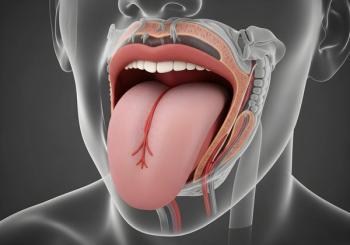
REM Density Could Be Potent Biomarker, Investigators Argue
The frequency of rapid eye movement appears to be associated with several psychiatric and neurological disorders, investigators said.
Though the understanding of sleep has been grown in recent years, investigators say a potentially valuable sleep-related biomarker has been hiding right beneath our eyelids.
In
Corresponding author
Collectively, those studies paint an intriguing picture, the authors said.
“As REMs [rapid eye movements] can be linked with circuitries directly or indirectly related to the ponto-geniculo-occipital wave generation during REM sleep, it becomes a timely topic or opportunity to reconsider if abnormalities in REMs may reflect disease involvement of these structures associated with specific syndromes or disorders,” Saleh and colleagues said.
Already, the investigators said, abnormal REM density (RD) has been associated with conditions like narcolepsy, depression, and borderline personality disorder, among others.
They said patients with elevated REM density have been found to have more severe depression and worse clinical outcomes compared to peers with lower REM density.
REM density may also to play a role in alcohol dependence.
“In a study examining the likelihood of alcohol relapse, increased RD (REM density) at admission to an alcohol rehabilitation facility predicted alcohol relapse at 3 months,” Saleh and colleagues noted.
There is also evidence to suggest REM density might be important in diseases such as narcolepsy and Parkinson’s disease, but the investigators said many of the existing studies have not taken it into account.
For example, a 2020 study suggested patients with Parkinson’s disease had reduced REM density compared to healthy controls. Yet, many other studies do not even include REM density as a parameter.
“Of note, in a meta-analysis of 50 studies with [polysomnography] data in Parkinson’s disease, only one study reported RD (REM density) data even though pathological findings on other parameters of REM sleep macrostructure such as REM latency and total REM sleep time have frequently been analyzed,” Saleh and colleagues said.
The investigators argue that sufficient associations have been identified to justify a broad expansion of REM density and its relationship with other diseases. However, they said one barrier to expanding REM density research is a lack of consensus about how best to define it.
“For example, should RD (REM density) be reported as a frequency of REMs per minute of REM sleep, RD (REM density) count for each REM sleep episode, or by other definitions using specific computational methods?” they wrote. “And furthermore, which REM sleep episode is best to evaluate for RD (REM density)?”
The authors said a number of pressing questions remain to be explored with regard to REM density and what it says about a person’s neurology and health. If a clear definition and clear parameters were adopted, polysomnography could be used to easily obtain REM density readings and perhaps a better understanding of a patient’s neurological and psychiatric disorders, they concluded.
“Ultimately, RD (REM density) may qualify as a valid, easily obtainable biomarker for both diagnostic precision and prognosis,” they wrote, “thus potentially ushering in earlier and more efficient treatment management plans.”
Newsletter
Get the latest industry news, event updates, and more from Managed healthcare Executive.


















































